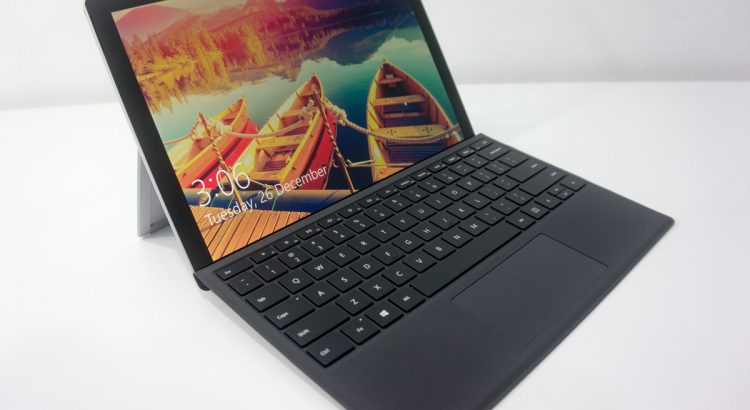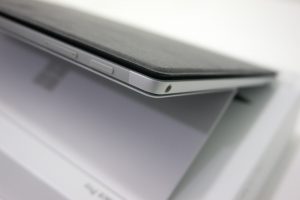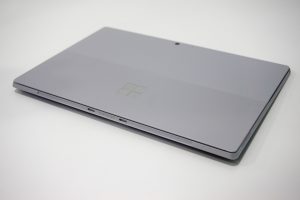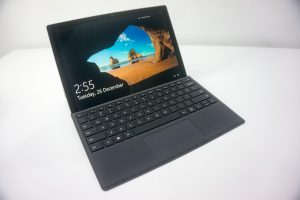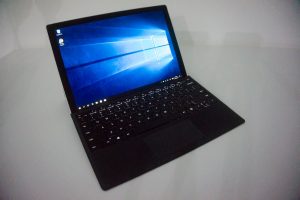Following up on my previous post, I’ll share my experience on my daily use with the Surface Pro.
Battery Life
I’ve been using the Surface almost daily for note taking, web browsing and watching videos during my trips. Battery life is actually quite solid with over 50% capacity left after 5 hours of usage. There’s been reported cases where users are able to stretch up to 14 hours of use in certain power saving conditions but it’s safe to say that it should be enough to last a day’s use.
During use, the Surface Pro is silent thanks to its new heat sink design that did away with active cooling but that doesn’t mean that it runs hot either which is great. The Windows Hello doesn’t seem to support portrait mode facial detection but that’s just a minor issue. The front facing speakers offers crisp sound and does a great job pumping out the volume when watching videos on the device.
Tablet and Desktop Mode Experience
Using the Surface as a laptop is a great experience due to the snappy SSD hard drive and design ergonomics. However, things gets a little weird when switching between the desktop and tablet mode. Most desktop applications for Windows were never optimized for tablet use. With the exception of some support for the Surface Pen in certain applications, switching between tablet portrait and desktop landscape does not optimize or reflow the applications UI elements or provide additional assistance for touch usage. The on screen keyboard is still present when text input is required but most menu items or toolbar icons, they remain as they were making selections rather tricky in many situations. It’s unfortunate that there is very little developer support to make their applications more touch friendly when switching modes and given the limited market size of Surface apps at the moment, I do not believe this will change in the near future.
The Mini DisplayPort worked well with a regular display using a DisplayPort to VGA adapter, but sadly I wasn’t able to connect it to my Apple Display. Having the Surface Pro attached to an external display with a wireless keyboard and mouse combo works really well to boost productivity. I managed to install Steam and engaged in a few sessions of CounterStrike:GO on the Surface with the resolution turned down. While it’s not exactly the best benchmark for gaming, I’d say it’s probably good enough for a quick gaming session while on the go with the Surface.
Accessories
Another area where the Surface is lacking is third party support for accessories. It isn’t common to find cases for the Surface partly due to its unique kick stand design and also likely due to it’s limited market share for accessory makers to produce them. I have also yet to see a similar third party TypePad style keyboard locally although you could use any Bluetooth keyboard with it. As I’ve mentioned in my previous post, the TypePad is certainly a must and the Surface Pen will really depend on your usage. I would highly recommend getting the Dock as well if the Surface will be your primary workstation as the expansions offered are pretty much essential for daily use.
Conclusion
There is no doubt that the Microsoft Surface is a great hybrid laptop and tablet, however, its use case is very specific for consumers looking for the functionality of a laptop and the versatility of a tablet as not all software works well on tablet mode. The new Surface Pros do not come with a Surface Pen which is now an additional purchase. If you’re a digital artist and needs the kind of portability that a tablet offers, the Surface makes a compelling choice as it’s pretty beefy to handle graphics and even photo editing. If you’re a working professional who requires occasional pen input and a flexible device for presentation to clients and still crunch a lot of numbers, the Surface would certainly fit the bill too.
